Can Planting Trees in Deserts Help Combat Climate Change
- September 9, 2024
- 0 comment
As climate change accelerates, innovative solutions are being explored to mitigate its impacts. One such approach is planting trees in arid desert regions. But can this strategy truly make a difference? This exploration examines the potential benefits and challenges of growing trees in deserts to combat climate change and enhance environmental resilience.
How Trees Help Combat Climate Change
Carbon Sequestration
Trees play a vital role in mitigating climate change through the process of carbon sequestration. During photosynthesis, trees absorb carbon dioxide (CO2) from the atmosphere and convert it into organic matter. This carbon is stored in various parts of the tree, including the trunk, branches, leaves, and roots. Additionally, carbon is sequestered in the soil through root systems and the decomposition of leaf litter. This long-term storage of carbon helps reduce the overall concentration of greenhouse gases in the atmosphere, which is essential for slowing the rate of global warming and mitigating climate change.

Mature forests, in particular, are exceptionally effective at sequestering large amounts of carbon over extended periods. The dense biomass of established forests acts as a significant carbon sink, storing carbon both above and below ground. Forests that are well-managed and preserved contribute to global carbon balance by continuously capturing CO2 and reducing atmospheric greenhouse gas levels. This capacity for carbon storage underscores the importance of protecting and restoring forests as a key strategy in the fight against climate change.
Cooling Effects
Trees contribute to local cooling through a process known as evapotranspiration. As trees release water vapor into the atmosphere from their leaves, they facilitate a cooling effect on their immediate surroundings. This process not only helps to lower local temperatures but also mitigates the urban heat island phenomenon, where urban areas experience significantly higher temperatures than their rural counterparts due to human activities and infrastructure. By providing shade and releasing moisture into the air, trees help reduce the ambient temperature, making cities more comfortable and less reliant on artificial cooling systems.
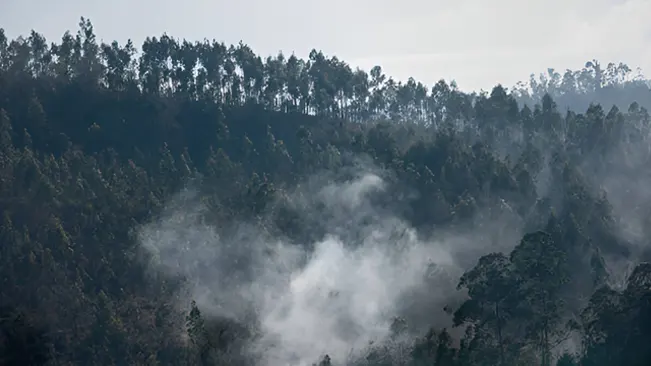
The reduction in temperature resulting from trees can lead to decreased energy consumption for air conditioning, which in turn lowers greenhouse gas emissions associated with electricity production. By cooling the environment naturally, trees contribute to a more sustainable urban climate and help alleviate the pressures on energy resources. This dual benefit of reducing heat and cutting energy costs highlights the significant role trees play in promoting energy efficiency and enhancing urban livability.
Improved Air Quality
Trees play a crucial role in improving air quality by acting as natural filters for airborne pollutants. They capture and trap particulate matter, such as dust and soot, as well as gaseous pollutants like sulfur dioxide, ammonia, and nitrogen oxides. The leaves and bark of trees can absorb these pollutants, which helps to cleanse the air and reduce the concentration of harmful substances. This air purification function is particularly important in urban areas where pollution levels are high and can have adverse effects on public health.
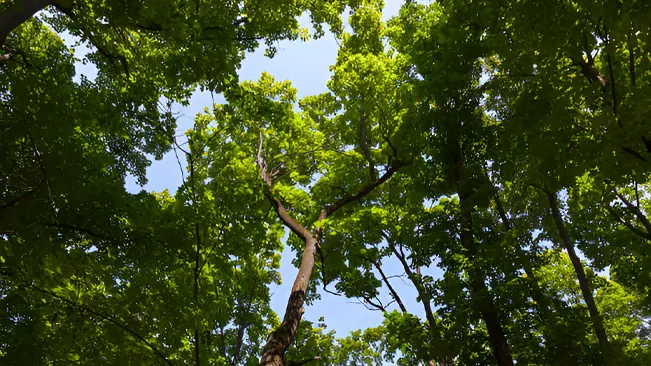
By enhancing air quality, trees help mitigate the health impacts associated with air pollution, including respiratory issues, cardiovascular diseases, and other related health problems. The presence of trees in communities and cities not only contributes to a cleaner and healthier environment but also supports overall public well-being. The benefits of trees in reducing pollution and promoting better air quality underscore their value as a key component in creating healthier and more sustainable living spaces.
Types of Desert Trees
1. Mesquite
Mesquite trees are remarkably resilient and well-adapted to the harsh conditions of desert environments. Their deep, extensive root systems are designed to reach groundwater sources, allowing them to thrive even during prolonged periods of drought. The roots of mesquite trees can penetrate several meters into the ground, accessing moisture that is unavailable to many other plants. Mesquite trees also feature small, pinnate leaves that minimize water loss through evaporation. This adaptation is crucial in arid regions where water conservation is essential for survival.
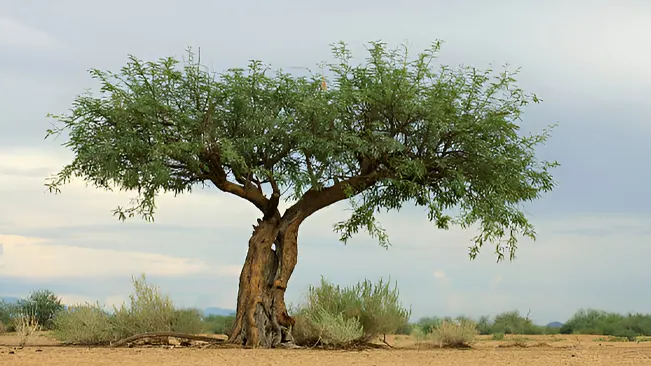
In addition to their drought tolerance, mesquite trees play a vital role in soil health and ecosystem dynamics. They are capable of fixing nitrogen in the soil through a symbiotic relationship with root-nodulating bacteria. This process enriches the soil with essential nutrients, which benefits other plant species growing nearby. Mesquites are often used in reforestation projects and land stabilization efforts due to their ability to thrive in poor soil conditions and their contribution to soil fertility. Their robustness and ecological benefits make them a preferred species for desert restoration and sustainable land management.
2. Acacia
Acacia trees are highly adaptable to arid environments and possess several traits that make them suitable for desert conditions. Many species of Acacia have small, waxy leaves or phyllodes (modified leaf stems) that are designed to reduce water loss. These adaptations help Acacias survive in areas with limited water resources. Additionally, Acacias can form beneficial partnerships with nitrogen-fixing bacteria in their root systems. This relationship allows them to convert atmospheric nitrogen into a form that is usable by plants, improving soil fertility and supporting the growth of other vegetation.
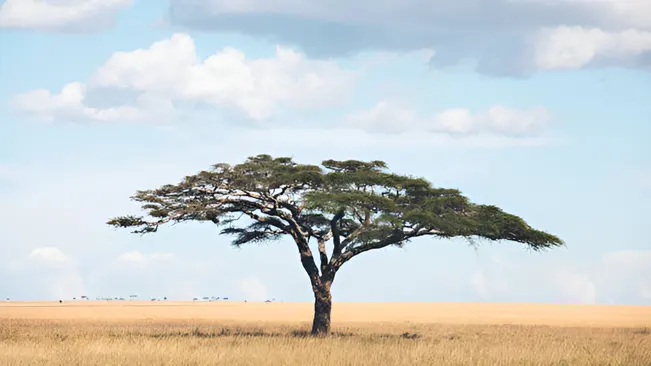
Acacia trees are equipped with deep taproots that enable them to access moisture from deeper soil layers, which is crucial during extended dry periods. Their resilience to drought and ability to improve soil quality make Acacias valuable for land rehabilitation projects. They also provide important ecological functions, such as offering shade and habitat for desert wildlife. The versatility of Acacia trees in adapting to various desert conditions makes them an integral component of desert ecosystems and reforestation initiatives.
3. Palo Verde
The Palo Verde tree is distinguished by its green bark and branches, which are adapted to the extreme conditions of desert environments. Unlike most trees that rely on leaves for photosynthesis, Palo Verde trees use their green bark to perform this vital function. This adaptation allows them to conserve water by reducing the number of leaves and minimizing water loss through transpiration. The reduced leaf surface area helps the tree survive in areas with scarce water resources.

Palo Verde trees also play a significant role in desert ecosystems by providing shade and habitat for a variety of desert wildlife. Their ability to thrive in extreme temperatures and arid conditions makes them valuable for desert landscaping and ecological restoration projects. In addition to their ecological benefits, Palo Verde trees contribute to soil stabilization and can help reduce soil erosion. Their unique adaptations and ecological contributions make them a key species in arid landscapes.
4. Date Palm
Date palms are iconic trees often associated with desert oases, where they have been cultivated for thousands of years. They are well-adapted to high temperatures and can tolerate extended periods of drought. The deep root systems of date palms enable them to access groundwater, which is essential for their survival in arid conditions. Their large, feathery leaves provide shade and help to reduce soil temperatures, creating a more hospitable microenvironment for other plants and wildlife.
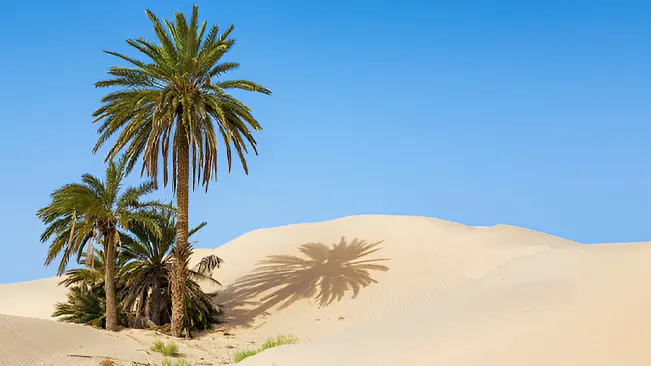
In addition to their ecological benefits, date palms are economically valuable due to their edible fruit. Dates are a staple food in many desert communities and provide essential nutrients, making them an important crop in arid regions. Date palms also contribute to soil stabilization and erosion control, further enhancing their value in desert environments. Their combination of ecological and economic benefits underscores their significance in desert agriculture and land management.
5. Joshua Tree
The Joshua tree is a distinctive species native to the Mojave Desert in the United States, known for its unique growth form and adaptability to extreme desert conditions. Its branching, tree-like structure and long, spiky leaves are designed to conserve water and withstand high temperatures. The Joshua tree’s ability to survive on minimal rainfall and endure temperature fluctuations makes it a crucial component of its desert ecosystem.
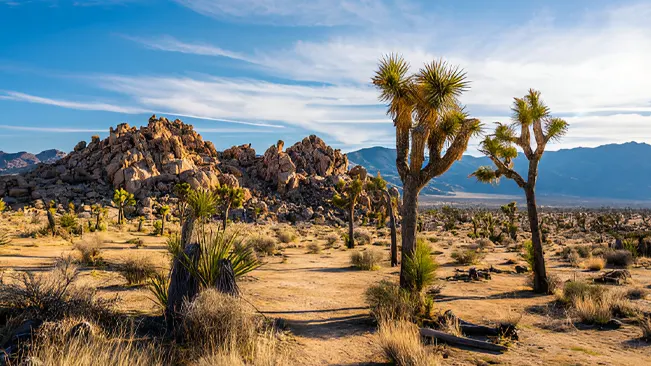
Joshua trees provide essential habitat and resources for various desert animals, including birds, insects, and mammals. They are a key species in the Mojave Desert, influencing the structure and function of the surrounding ecosystem. The Joshua tree also plays a role in soil stabilization and contributes to the overall biodiversity of desert landscapes. Its distinctive appearance and ecological importance make it a symbol of desert environments and a focus of conservation efforts.
6. Fig
Certain species of fig trees, such as the Desert Fig (Ficus macrocarpa), are well-suited to arid environments due to their ability to withstand high temperatures and dry conditions. Fig trees have thick, leathery leaves that help to reduce water loss and protect against extreme heat. Their deep root systems allow them to access moisture from underground sources, making them resilient in arid regions.

Fig trees provide valuable benefits beyond their ecological roles. They produce edible fruit that is a valuable food source for both wildlife and humans. Additionally, fig trees contribute to soil stabilization and habitat creation in desert areas. Their ability to thrive in harsh conditions and their ecological contributions make them an important species for desert landscaping and environmental restoration projects.
7. Desert Ironwood
The Desert Ironwood is a slow-growing, drought-tolerant tree native to the Sonoran Desert. Its dense, hard wood is highly resistant to decay, which helps it survive in the harsh desert environment. The tree’s deep root systems enable it to access groundwater and withstand extreme dry conditions. Desert Ironwood trees play a crucial role in stabilizing sandy soils and reducing erosion, which is important for maintaining the health of desert ecosystems.
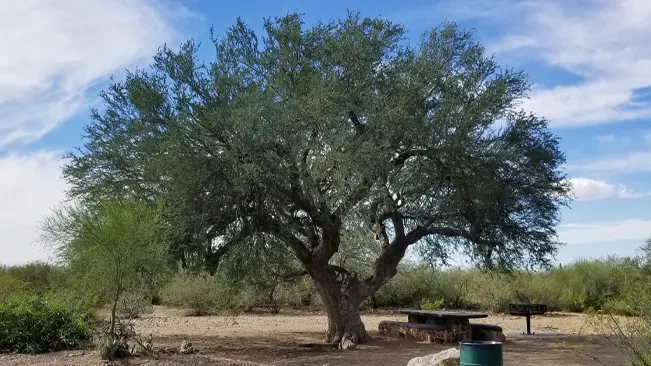
In addition to its ecological functions, the Desert Ironwood provides essential habitat and food for desert wildlife. Its dense foliage offers shelter for various animal species, and its seeds serve as a food source for birds and mammals. The tree’s ability to contribute to soil stability and support wildlife makes it an integral part of the desert ecosystem. Its durability and ecological importance underscore its value in desert conservation and land management efforts.
Potential Benefits of Desert Tree Planting
Environmental Benefits
Planting trees in desert regions offers several notable environmental benefits. One of the primary advantages is the improvement of air quality. Trees act as natural air filters by trapping dust, absorbing pollutants like sulfur dioxide and nitrogen oxides, and reducing particulate matter in the atmosphere. In arid environments, where dust and sand are prevalent, the presence of trees can help to mitigate air pollution, making the environment healthier for both humans and wildlife.
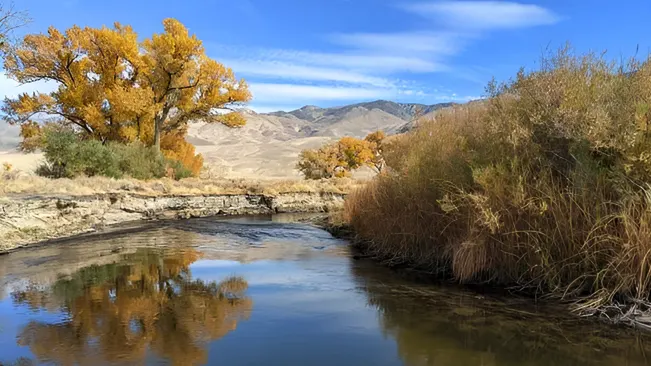
Additionally, trees in desert areas contribute to soil stabilization and prevent erosion. The root systems of trees help to anchor the soil in place, reducing the risk of wind and water erosion, which is particularly important in deserts where loose, sandy soils are highly susceptible to movement. Tree planting also promotes soil fertility through the addition of organic matter from fallen leaves and decomposing plant material. This improved soil structure enhances its water-holding capacity and supports the growth of other vegetation, fostering a more resilient and balanced ecosystem. Furthermore, trees create microclimates by providing shade and reducing surface temperatures, which can help sustain local flora and fauna.
Societal and Economic Benefits
The societal and economic benefits of planting trees in desert regions are significant and multifaceted. One of the key advantages is job creation. Tree planting and maintenance initiatives can generate employment opportunities in local communities, ranging from planting and irrigation work to roles in project management and environmental education. These jobs not only provide income but also contribute to community development and skill-building.

Economically, tree planting can lead to increased land productivity and sustainability. In arid regions, trees can enhance land value by improving soil quality and creating favorable conditions for agricultural activities. Additionally, the establishment of green spaces and improved landscapes can attract tourism and recreational activities, contributing to local economies. On a societal level, the cooling effects of trees can moderate local climates, making desert areas more habitable and comfortable. This can lead to improved quality of life for residents by reducing heat stress and enhancing overall environmental conditions.
Conclusion
Planting trees in desert environments offers a viable strategy for combating climate change. Desert-adapted trees, such as Mesquite and Date Palm, can sequester carbon, stabilize soil, and improve air quality, all of which contribute to reducing greenhouse gas levels. These trees also enhance local climates, provide wildlife habitat, and support economic development through job creation and land productivity. Despite challenges like water scarcity, the benefits of desert tree planting make it a valuable approach for addressing climate change and fostering resilient ecosystems.
FAQs
- Why is planting trees in deserts important for combating climate change?
Planting trees in deserts helps combat climate change by sequestering carbon dioxide (CO2) from the atmosphere, which reduces greenhouse gas levels. Trees also improve soil health, stabilize sandy soils, and enhance air quality. By capturing CO2 and providing essential ecosystem services, desert trees play a crucial role in mitigating climate change. - What are the main challenges of growing trees in desert environments?
The primary challenges include water scarcity and poor soil conditions. Deserts have limited rainfall, making it difficult for trees to access water. Additionally, desert soils are often low in nutrients and organic matter, which can hinder tree growth and establishment. - Which tree species are best suited for desert environments?
Several tree species are well-adapted to desert conditions, including Mesquite, Acacia, Palo Verde, Date Palm, Joshua Tree, Fig, and Desert Ironwood. These species are resilient to drought, high temperatures, and poor soil conditions, making them suitable for desert reforestation and land stabilization. - How do desert trees help improve air quality?
Desert trees improve air quality by filtering pollutants and trapping dust and particulate matter. They absorb harmful gases like sulfur dioxide and nitrogen oxides through their leaves and bark, which helps to cleanse the air and reduce pollution-related health impacts. - What are the economic benefits of planting trees in deserts?
Economic benefits include job creation in areas such as planting, maintenance, and environmental education. Additionally, trees can enhance land productivity, increase property values, and attract tourism. Trees also provide resources like edible fruit (e.g., date palms) and contribute to local economies. - How can water scarcity be managed when planting trees in deserts?
Water scarcity can be managed through techniques such as drip irrigation, rainwater harvesting, and using drought-tolerant tree species. Efficient water management practices help ensure that trees receive the necessary moisture while minimizing water waste. - What role do desert trees play in local ecosystems?
Desert trees provide essential habitat and resources for wildlife, contribute to soil stabilization, and enhance local biodiversity. They also help create microclimates by providing shade, which can support other plant species and improve the overall health of the ecosystem. - Can desert tree planting efforts be successful with current technology and methods?
Yes, with advancements in technology and improved methods, such as using efficient irrigation systems and selecting resilient tree species, desert tree planting efforts can be successful. Ongoing research and innovation continue to enhance the effectiveness of these projects.

Joel Cunningham
Forestry AuthorI'm Joel Cunningham, an expert in pruning and weed management with over a decade of experience. My skills are rooted in formal training and extensive practice, focusing on advanced pruning techniques and efficient weed control. I'm known for my quality work, precision, and deep understanding of plant health and soil dynamics. My contributions extend to educational initiatives where I share sustainable practices and advice, establishing myself as a reliable and authoritative figure in the gardening community.

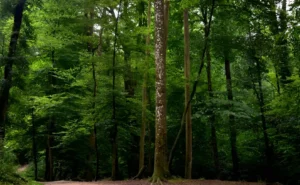









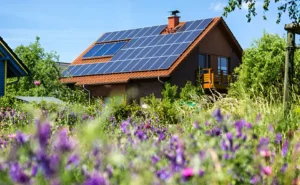

Leave your comment